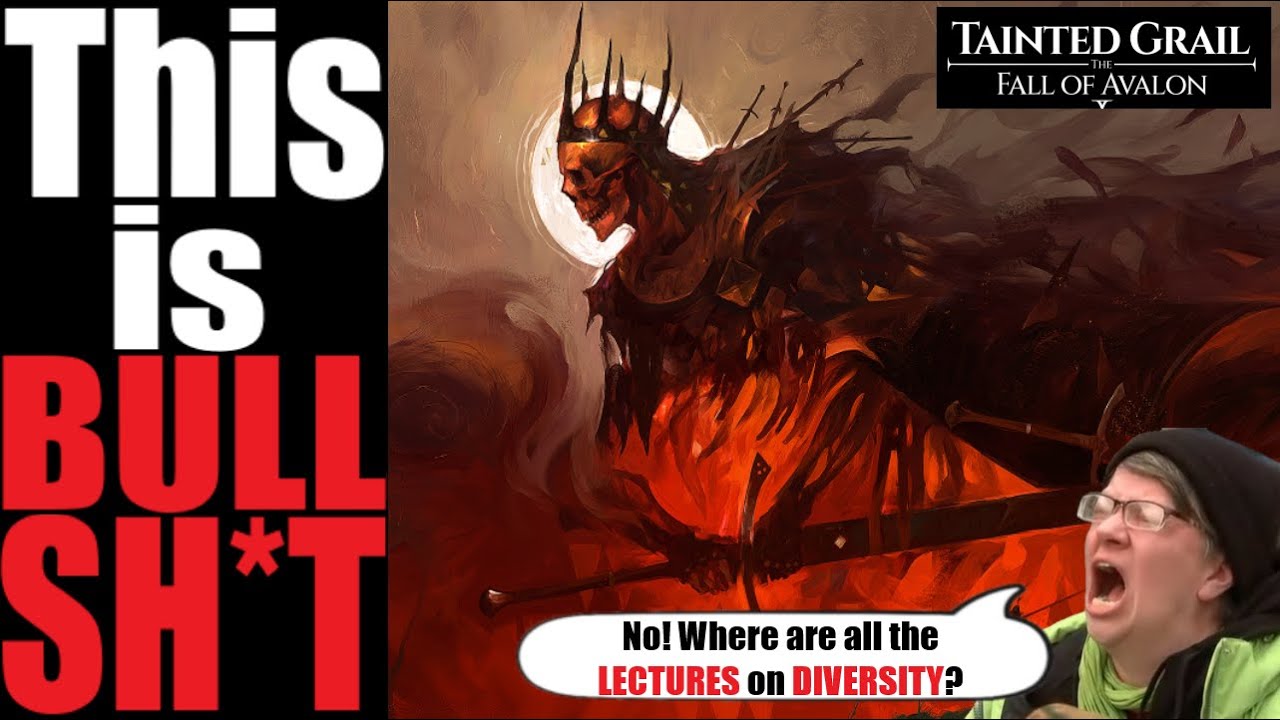Tainted Grail: The Fall of Avalon’s Indie Triumph
In the crowded world of 2025 gaming, Tainted Grail: The Fall of Avalon has emerged as an unexpected gem, with fans proclaiming it “Skyrim’s dark cousin” for its immersive open-world RPG experience. Launched on May 23, 2025, by indie studio Questline and publisher Awaken Realms, this dark fantasy reimagining of Arthurian legend has garnered an 87% “Very Positive” rating on Steam from 7,749 reviews and an 82/100 from 14 critics on OpenCritic. Yet, a vocal narrative online claims the media “refuses” to review it, dismissing it as non-AAA “crap” despite its quality. Social media buzz suggests this indie title is being overlooked, but evidence shows several major outlets have covered it, debunking the snub myth. Amid technical hiccups and a passionate fanbase, Tainted Grail’s rise highlights the power of indie gaming, the pitfalls of AAA bias, and a community ready to champion a flawed but heartfelt adventure.

The Snub Myth
The claim that the media is ignoring Tainted Grail: The Fall of Avalon because it’s not a AAA title stems from a May 2025 YouTube video, which argued that “game journalists” skipped it due to its indie roots. The video, amplified on platforms like X, tapped into frustration that mainstream outlets prioritize big-budget games from studios like Bethesda or Ubisoft. Fans echoed this, with one X post praising the game’s “old-school Skyrim vibes” while lamenting its lack of coverage. However, this narrative doesn’t hold up. Major sites like IGN, GameRant, ScreenRant, and Pure Xbox published reviews, with IGN calling it a “fun but familiar open-world RPG” and ScreenRant noting its “wild success” post-Early Access. OpenCritic’s 14 reviews, including from Hobby Consolas and The Games Machine, further confirm critical attention.
The perception of a snub likely arises from the game’s lower profile compared to AAA blockbusters like Assassin’s Creed Shadows. Questline, a small Polish studio, lacks the marketing muscle of EA or Sony, limiting its reach. The game’s Early Access history, starting in 2023, may have dulled media interest, as some outlets waited for the 1.0 release. Technical issues—optimization problems, clunky combat, and dated character models—also tempered enthusiasm, with reviewers noting “jank” reminiscent of The Elder Scrolls. Yet, the idea that media outright refused to cover it is exaggerated, driven by fans’ protective zeal for an indie underdog.
A Dark Arthurian Adventure
Tainted Grail: The Fall of Avalon reimagines Arthurian legend in a grim, post-apocalyptic Avalon, 600 years after King Arthur’s fall. Players control a prisoner of the Red Priests, navigating a world ravaged by the Red Death plague and the Wyrdness, a chaotic force reshaping reality. The narrative, inspired by the 2019 Tainted Grail board game, blends Celtic mythology with dark fantasy, offering 50-70 hours of gameplay across three expansive zones. Its branching storyline, with over 200 side quests and 250 voiced NPCs, lets players shape Avalon’s future through morally complex choices, earning praise for its “entangled plot” and “remarkable characters”.
The game’s open-world design draws heavily from The Elder Scrolls, particularly Oblivion and Skyrim. Players explore diverse biomes—sunken villages, cemeteries, fortresses—while engaging in activities like fishing, crafting, alchemy, and sketchbook journaling. Combat, a first-person mix of melee and magic, feels weighty but “clunky,” with a tight parry window and basic mechanics that don’t reinvent the genre. The gear system, while varied, is unbalanced, with high attribute requirements frustrating early progression. Despite these flaws, the world’s oppressive atmosphere and deep lore have won fans, with one X post calling it “a love letter to open-world RPGs” for its freedom and discovery.
The Indie Advantage and Challenges
Questline’s indie status is both a strength and a limitation. With a budget far below AAA giants, the studio crafted a 60-80 hour RPG that rivals Skyrim’s scope, a feat praised by reviewers for its “epic scale” and “passion”. The game’s artbook, soundtrack, and unique features—like turning enemies into cheese with a spell—showcase creativity that resonates with players tired of formulaic AAA titles. Steam reviews highlight its “Morrowind vibes” and “soul,” with 89% of recent reviews (3,621) positive, reflecting word-of-mouth success.
However, technical issues mar the experience. Optimization is poor, with reports of crashes, laggy camera controls, and low-resolution textures, especially on PS5, where the game is capped at 1080p despite 4K demo promises. Character models look “Play-Doh-like,” and enemy AI can be erratic, with NPCs occasionally breaking quests. These flaws, noted in reviews on Reddit and Steam, fuel comparisons to Bethesda’s “jank,” but Questline’s smaller team struggles to patch them as swiftly. The game’s $29.99 price (or $44.99 for the Supporter Edition) is seen as fair, but some argue it’s steep for a “rough” indie title, especially with lingering Early Access bugs.
The “Modern Audience” Narrative
The claim that the “modern audience” failed Tainted Grail mirrors broader gaming debates, like those around Dragon Age: The Veilguard or Onimusha 2’s remaster. Some X posts suggest younger players, accustomed to polished AAA games or multiplayer titles like Fortnite, overlooked Tainted Grail for its dated visuals and single-player focus. Yet, this oversimplifies the issue. The game’s Steam success and Reddit threads with 45 votes and 103 comments show strong support, particularly from fans of Oblivion and Morrowind who relish its old-school RPG charm. One Reddit user called it “the future” of indie RPGs, praising its leveling system and lore despite budget constraints.
The real challenge lies in visibility. Without AAA marketing, Tainted Grail relies on grassroots hype, which has driven its “Overwhelmingly Positive” recent Steam ratings. Review bombing, targeting its “janky” elements or lack of polish, hasn’t deterred its core audience, but it may have scared off casual players. The game’s dark, mature tone and complex systems also demand investment, potentially alienating those seeking instant gratification. Rather than a failure of the “modern audience,” its niche appeal reflects a market where indie games must fight for attention against $300 million behemoths.
BioWare’s Echoes and Industry Trends
The Tainted Grail saga parallels Dragon Age: The Veilguard’s struggles, where actress Alix Wilton Regan claimed fans “wanted BioWare to fail.” Both games faced accusations of chasing a “modern audience” at the expense of core fans, though Tainted Grail’s indie roots make its ambition more forgivable. BioWare’s pivot to Mass Effect 5 mirrors Questline’s hope for future projects, with fans on X speculating that Tainted Grail’s sequel could refine its formula. The indie scene, bolstered by successes like Hollow Knight and Hades, shows that AA games can thrive, as one Reddit user noted: “AA games are where it’s at lately.”
Tainted Grail’s board game origins, a 2018 Kickstarter hit, add context. Its narrative depth, carried over to the video game, resonates with tabletop fans, but the transition to a sprawling RPG stretched Questline’s resources. The studio’s transparency about not aiming for AAA polish has won goodwill, but technical issues risk undermining its reputation, much like Cyberpunk 2077’s launch woes.
The Road Ahead
Questline’s future hinges on addressing Tainted Grail’s flaws. Patches to fix optimization, AI, and visuals could boost its longevity, especially on consoles where PS5 performance has drawn ire. A sequel or DLC, leveraging the game’s lore and 200+ side quests, could capitalize on its fanbase, with Reddit users already clamoring for more zones. Capcom’s Onimusha 2 remaster flop, blamed on censorship and DRM, offers a cautionary tale: Questline must prioritize fan feedback to avoid alienating its community.
For now, Tainted Grail: The Fall of Avalon stands as a testament to indie ambition. Its “Skyrim-like” world, branching narrative, and dark Arthurian twist have carved a niche, despite claims of media neglect. The snub narrative, while exaggerated, reflects real challenges for indies in a AAA-dominated industry. As fans rally around this “love letter to open-world RPGs,” Questline’s journey is just beginning, with Avalon’s Wyrdness ready to enchant—or haunt—players for years to come. Dive into the hype, unpack the jank, and see why this indie epic has everyone buzzing.





